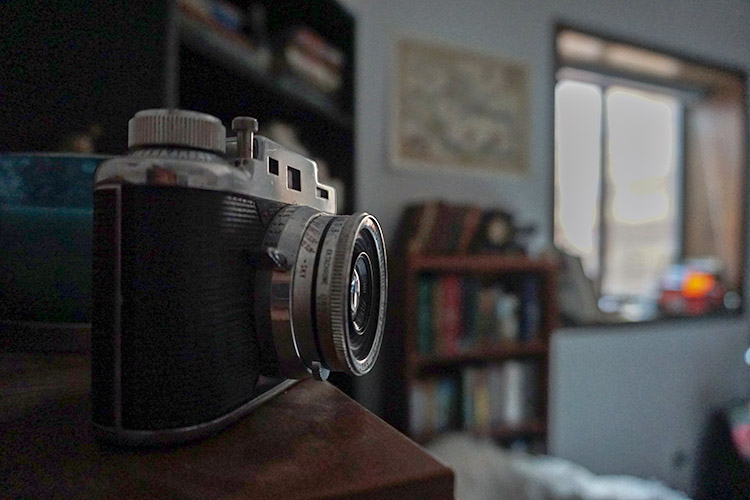
An original Kodak Bantam 828 sits ready for use upon a bookshelf. photo by Kaylee Held
With everyone drowning in free time, why not pick up a new skill?
Though online school is occurring four days a week, many students find themselves with little to do all day. Screen time on the phone is through the roof, hair dye is sold out, and many are stuck inside with seemingly nothing to do. The notion of picking up a hobby is not new, as many people are encouraging it during these times, but with so many options out there, it is hard for one to choose. Learning new skills often involves having to physically buy materials or acquire an object (such as paint, yarn, or makeup). There is one hobby, however, which only requires a phone. Photography is a beautiful way to display your interpretation of the world, so why not give it a try?
It is not difficult to do photography. Many are daunted by the thought that one has to own a professional camera and use expensive editing software to qualify. None of this is true, of course. Anyone can point, shoot, and produce a picture. However, there are some easy tips which can start you on the right path.
The first important thing to distinguish is whether or not you want to buy an actual camera or stick to your phone. It depends on how serious you are about learning this new skill. If you want to stick to your phone, or you just want to get the feel of it first, then that is completely fine! The important thing to remember is that your phone is basically a point-and-shoot camera, meaning that you will have to do your lighting fixes within an app. It is up to you what type of photos you want to take—landscape, photography, portraits—whatever your heart desires. If you are satisfied with the result, then go no further. However, if you want to portray some kind of feeling that you’re just not getting, great apps like Polarr and Snapseed can help you achieve the look. With everything from HSL to fringe, the modifications one can make are endless. Both are available for Android and iPhone, and filters are also included. If you do not feel confident enough to start modifying your own photos, the key to getting a great photo is the way you take it. With a point and shoot, you will have to depend on angles to make your picture stick out. Shoot through things such as branches and flowers; put your phone near the floor to give the illusion of grand objects; think outside of the box.
However, if you happen to have an old camera lying around, or you just bought one, there is a little more to it than just angles and apps. The Exposure Triangle will usually be the first thing someone learns when it comes to photography. Aperture, Shutter Speed, and ISO do not matter when it comes to phones, as there are not individual settings to change, but cameras (such as SLR, mirrorless, film and DSLR) all provide these features. Though almost all cameras feature an automatic mode, manual is not as hard as it seems. At the base of a photo’s settings, all you need to change are the ISO, Aperture, and Shutter Speed. These three components are quite easy to understand. Shutter Speed determines how fast the photo is taken, so if you want light streaks within your picture, a bigger SS is ideal (¼ or ⅛, for example). However, if you do sports photography and are trying to capture something fast in sharp focus, a faster shutter speed, such as 1/500, is the way to go. It is a very easy concept to understand. The Aperture determines how much light the lens is exposed to. The lower the f-stop, the more light is let in, and the camera is more focused on an object. If you have a lens with an f-stop of 2.8, for example, this means the camera lens can open fairly wide. Bokeh blur is also something that comes out of aperture. If you have a lower f-stop, the background blur behind an object will be stronger. ISO is something that should mainly be kept on auto, as it determines your camera’s sensitivity to light. The higher the ISO, the stronger the grain. So it is best to leave it as low as possible. From there, once you understand the basics, you’re ready to go out into the world and take pictures!
Any camera will last years, as long as it is taken care of properly. Cameras offer an abundance of customizable settings, which will expand one’s freedom with the photos they choose to take – not to mention the vast sea of brands, with Sony, Nikon, and Canon taking the lead. Overall, the hobby is not as hard as it seems, and it comes down to how you want to approach it. So whether you are content with your phone and a few filters, or you want to delve deeper and change settings, it is up to you!